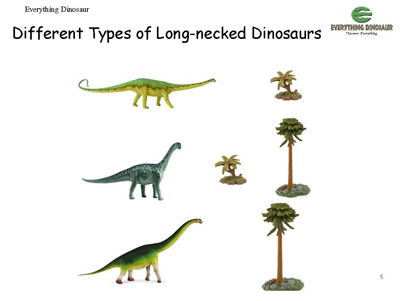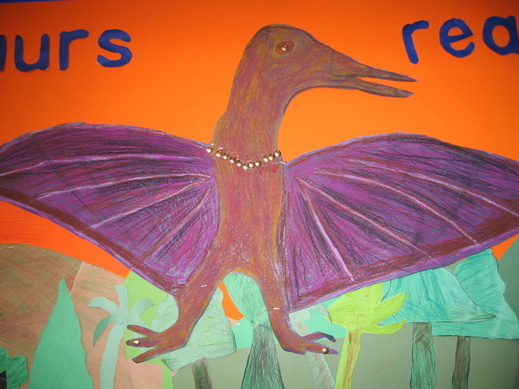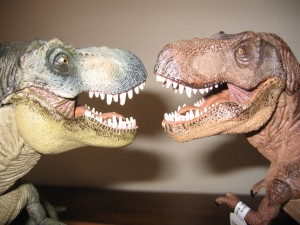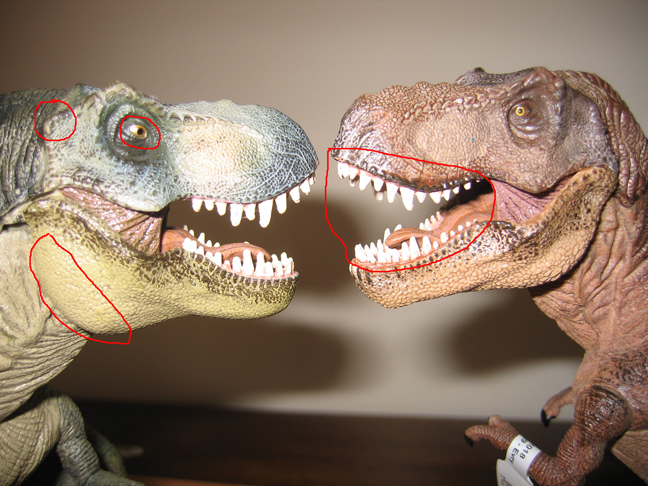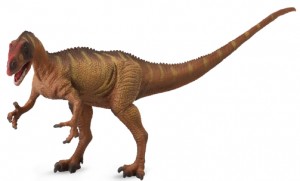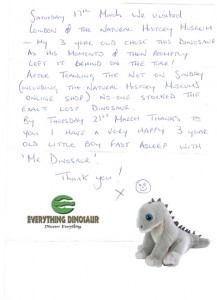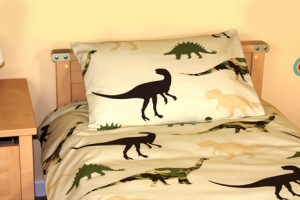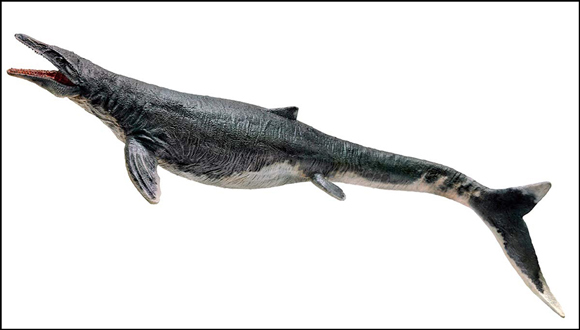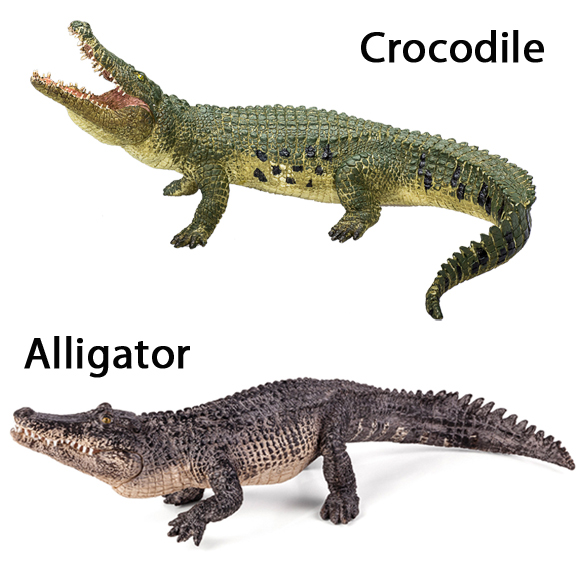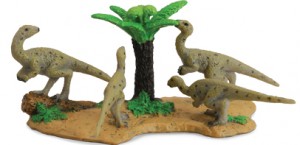The Young Palaeontologists at Kensington Primary School
Year 4 Pupils at School Demonstrate their Knowledge of Dinosaurs
Yesterday, one of Everything Dinosaur’s team members visited Year 4 pupils at Kensington Primary school as part of the school’s teaching topic which has focused on dinosaurs. The budding young palaeontologists were keen to show off their special dinosaur hats that they had made under the supervision of their teacher’s Miss Rafique and Miss Vavrykovych. The visit from Everything Dinosaur helped reinforce learning outcomes that had been covered during an earlier trip to the Natural History Museum, the classroom walls displayed the various stories and pictures that the children had created. There were even some dinosaur scenes on display that the children had made, surrounded by all these dinosaurs, we were certainly made to feel at home.
Young Palaeontologists
Three brave pupils in Miss Rafique’s class got the chance to cast a museum quality replica of a tyrannosaur manual ungual (finger claw most likely from a large, Late Cretaceous meat-eater known as Albertosaurus sarcophagus). This would make an interesting addition to the classroom’s colourful dinosaur display, after all, not many school children get to see and handle dinosaur claws.
Some of the Colourful Artwork on Display Outside the Classrooms
Picture credit: Everything Dinosaur/Kensington Primary School
As part of Everything Dinosaur’s commitment to the Earth Sciences we wanted to give the children an insight into some real palaeontology puzzles and problems. For example, one class looked briefly at the horned dinosaur Triceratops and why very few fossilised forelimbs seem to have been preserved in the fossil record, whilst the second class looked at Spinosaurus and what the fossils tell us about huge meat-eating dinosaurs.
Building on this theme, with the assistance of Miss Rafique and the teaching assistant, Mrs Pate,l we explored how the sauropod (long-necked dinosaur), Brontomerus got its name. Having examined some of the evidence, the pupils were given the chance to name their very own sauropod.
Naming a Dinosaur – Different Sauropod Types
Picture credit: Everything Dinosaur
Based on the fossil evidence provided, the school children came up with a variety of amazing names for a herbivorous dinosaur whose long neck enabled it to reach high into trees to feed.
Dinosaur Names
Some of the names the children thought of:
Branchosaurus, Altisaurus, Reachosaurus, Antelopeohsaurus and Dinnerosaurus.
When classifying newly discovered dinosaurs, if you are given the job of describing the animal then you get to name it, so perhaps these young palaeontologists may inspire some amazing dinosaur names.
Close up of the Pterosaur (Flying Reptile) in the Artwork
Picture credit: Everything Dinosaur/Kensington Primary School
On the very colourful dinosaur artwork that was on show outside Year 4’s classroom, we noticed a novel use of drawing pins. The pictures had been pinned to the backdrop, but also a drawing pin had been used to make the eye of the pterosaur (flying reptile). Drawing pins had also been used to make a dramatic, gold necklace-like marking on the neck of the creature. We thought this was a lovely and very creative touch. Perhaps if scientists were to discover a flying reptile fossil with distinctive markings on the cervical vertebrae (neck bones) they could call in “Machorhynchus” as the drawing pins reminded us of a chest medallion.
It was a pleasure to visit the school and to meet all the enthusiastic pupils, perhaps some of the children will go on to have a career in the Earth sciences.
Visit Everything Dinosaur’s website: Everything Dinosaur.



